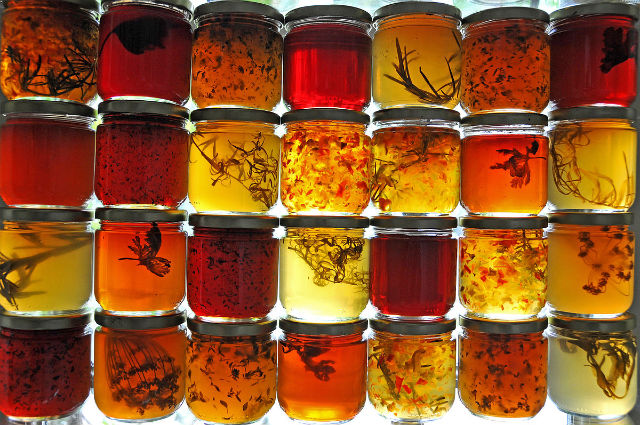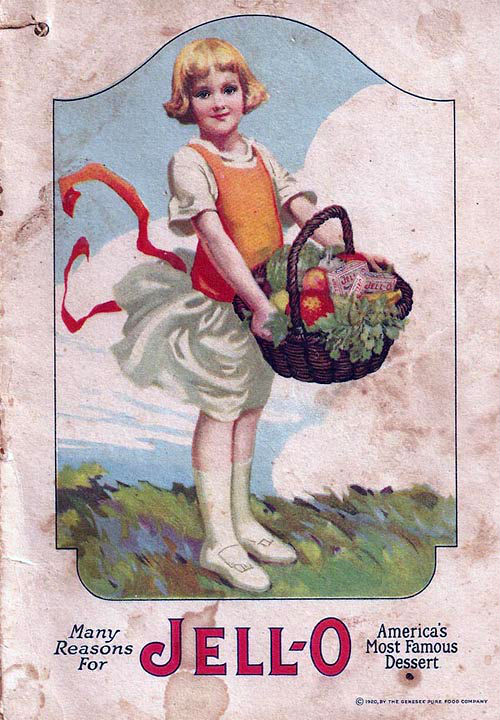Although pectin and gelatin are both used to thicken, gel, or stabilize foods and other products, they are very different. Pectin comes from fruit, and gelatin from animals. If you are eating a plant-based diet, you will want to for-go the gelatin or products that have gelatin in them (like marshmallows).
After I read about how gelatin is made, I kind of got grossed out. Especially if you watch how it’s made. So, yea, gelatin is a substance derived from animal bones and skin. Pectin is a carbohydrate found in ripe fruits. They are made commercially, but you can also make them yourself.
Gelatin
Gelatin is a protein substance that comes from the collagen in cow bones, cow hides, pig bones, pig hides and fish skins, according to the Gelatin Manufacturers Institute of America. The bones and skins are soaked in alkalines and acids for approximately five days to extract minerals and bacteria. Then they are boiled in distilled water, which extracts the gelatin from the bones, making the water gelatinous. The water is evaporated, and the gelatin residue is ground to a granulated powder. You can imagine that the process must be a stinky mess, as the second video attests.
Gelatin Uses
Gelatin is used in the manufacture of both foods and pharmaceuticals.
It’s a protein and thus contains amino acids. The granules absorb water and become a gel – hence the famous gelatin desert called Jello. It’s also used in aspics – those strange recipes of the English table. Did you ever see that movie, Julia and Julia? She makes an aspic from scratch by boiling some meaty bones. For any of us that have only eaten fruit gelatins, this looks disgusting.
You will also find gelatin in ice cream, yogurt, sour cream, pudding and other frozen desserts because it can be whipped into a foam and used as a stabilizer. Take a look at the foods you buy and see if it is on the label. Because it is a good emulsifier, (meaning it allows water to mix with oil) gelatin is also used to make candies such as marshmallows, taffy and fondant.
The pharmaceutical industry uses gelatin to make capsules, cosmetics and ointments. Gelatin binds ingredients and that’s why they are used in cosmetics. Gelatin capsules are pills with two tubular sides that enclose a powdered drug. Soft capsules, which contain a liquid drug, are also made of gelatin.
Fruit Pectin
Pectin is a water-soluble carbohydrate substance found in the cell walls of plants. Pectin keeps the adjacent cell walls in the fruit together which keeps the fruits firm as they ripen. As fruit gets over-ripe and soft, the pectin in the cell walls break down into simple sugars that are water soluble and then the fruit gets mushy. Just-ripe fruit has more pectin in the skins and cores. As fruit ripens, there is less pectin in it.
For the commercial production of pectin, apples and oranges have the best gelling qualities, according to the National Center for Home Food Preservation. All fruit has pectin, but some fruit produces more pectin than others. In commercial production — the fruit is usually dried and added to water and enzymes, which extracts the pectin. Then the solids are separated out and the remaining solution is filtered. This final liquid is mixed with alcohol to precipitate the pectin. The final product is dried and ground to a powder. As you can see, pectin is not an animal product, and a good choice for vegetarians.
Pectin Uses
Pectin is most commonly used to gel fruit jams and jellies. Recipes recommend adding pectin to ensure a good gel consistency, even though fruits have pectin in them already. Pectin is available as a powder or a liquid, but these are not interchangeable. Always follow the recipe when making jams and jellies. Pectin requires sugar to create a gel, but unlike gelatin, it works in cold as well as hot water. This means that you can use it in freezer jams as well as in traditional boiled jams. But you have to add sugar.
Some yogurts are now using pectin instead of gelatin — take a look at the labels.
Unlike gelatin, which is digestible, pectin is not digestible and is considered a dietary fiber. Pectin is helpful for lowering LDL cholesterol.



